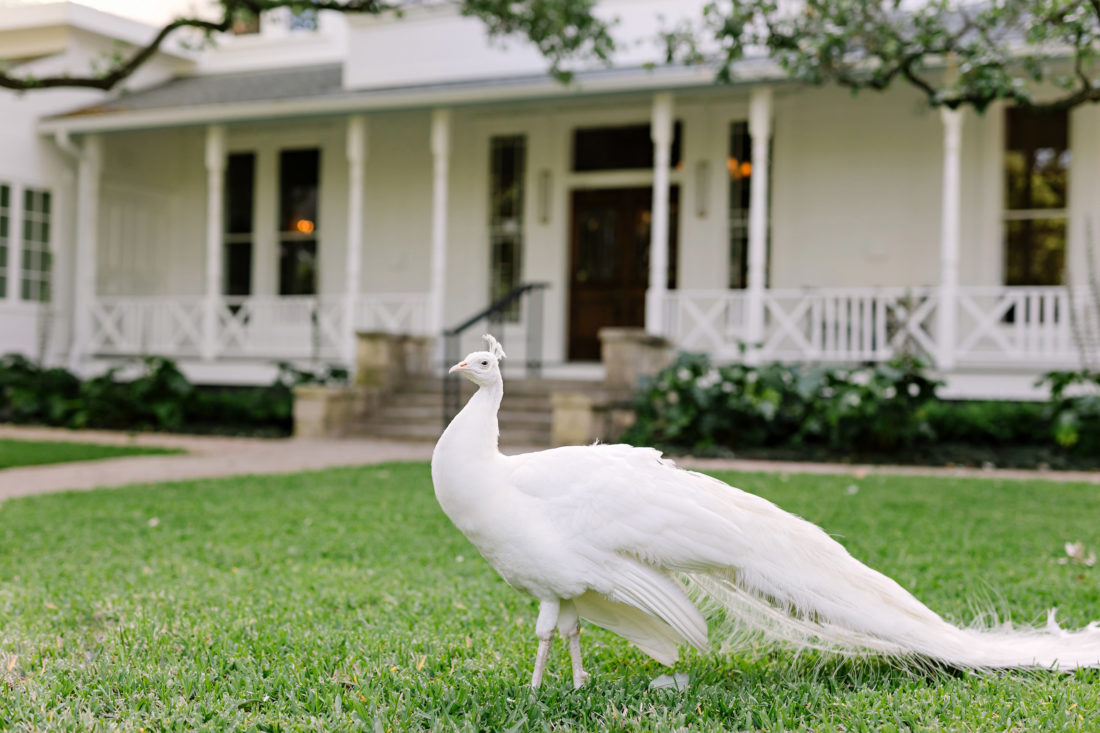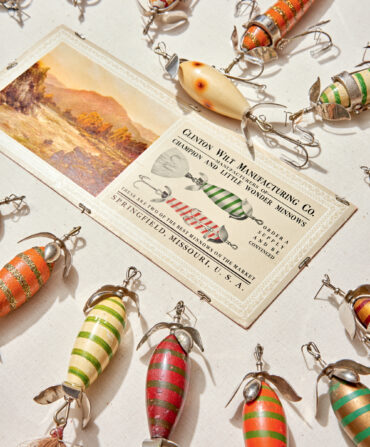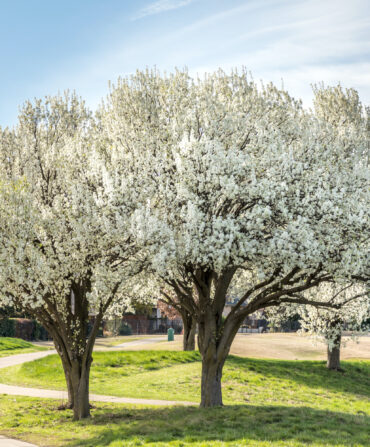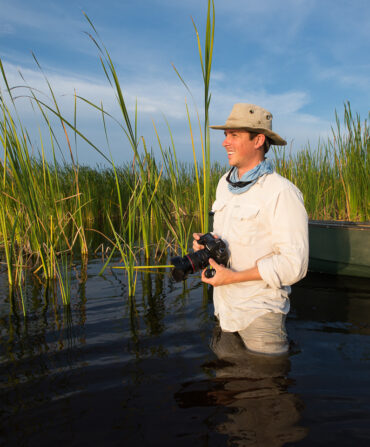When the landmark Austin, Texas, restaurant Green Pastures reopened as Mattie’s last spring, the menu and dining rooms received a thorough sprucing and the restaurant name changed. But the peacocks stayed the same.
Since the 1960s, wild peafowl have roamed the grounds surrounding the stately farmhouse-turned-restaurant, where diners photograph them perched in massive oak trees and preening on the lawn. Current owner Greg Porter estimates that there are eighteen peacocks and peahens who make Mattie’s their home base, and although wild, they are likely the descendants of birds gifted to the original proprietors in 1968. (Peafowl are native to India and Southeast Asia, but the imported animals have been in the United States since the mid 1800s.)

Photo: Julie Wilhite
Peafowls outside of Mattie’s.
This spring, over a decadent brunch of flaky croissants, grilled octopus with Sea Island red peas, and a knock-you-flat glass of bourbon milk punch, I watched a drama play out. It would be writerly to call the scene a “quiet drama,” but the truth is there was quite a bit of squawking.
The staff calls one of the peacocks “Snowball” for his stunning all-white plumage. Although peacocks are known for their flamboyant iridescent feathers, some individuals are naturally all-white (not albino, simply covered in white feathers as a result of a genetic mutation). While delivering dishes to my table on the front patio, a few of the Mattie’s staff dropped hints about Snowball’s storyline. “Poor thing’s frustrated,” one server said. “It’s mating season and he’s never had a mate.”
“The lady birds only go for the colorful guys,” another server observed. I looked over to see Snowball, feathers splayed, clucking and walking in circles. A moment later, he leapt—it’s not really flying—into a low tree branch and let out a squawk. Were these the sounds of sexual frustration?
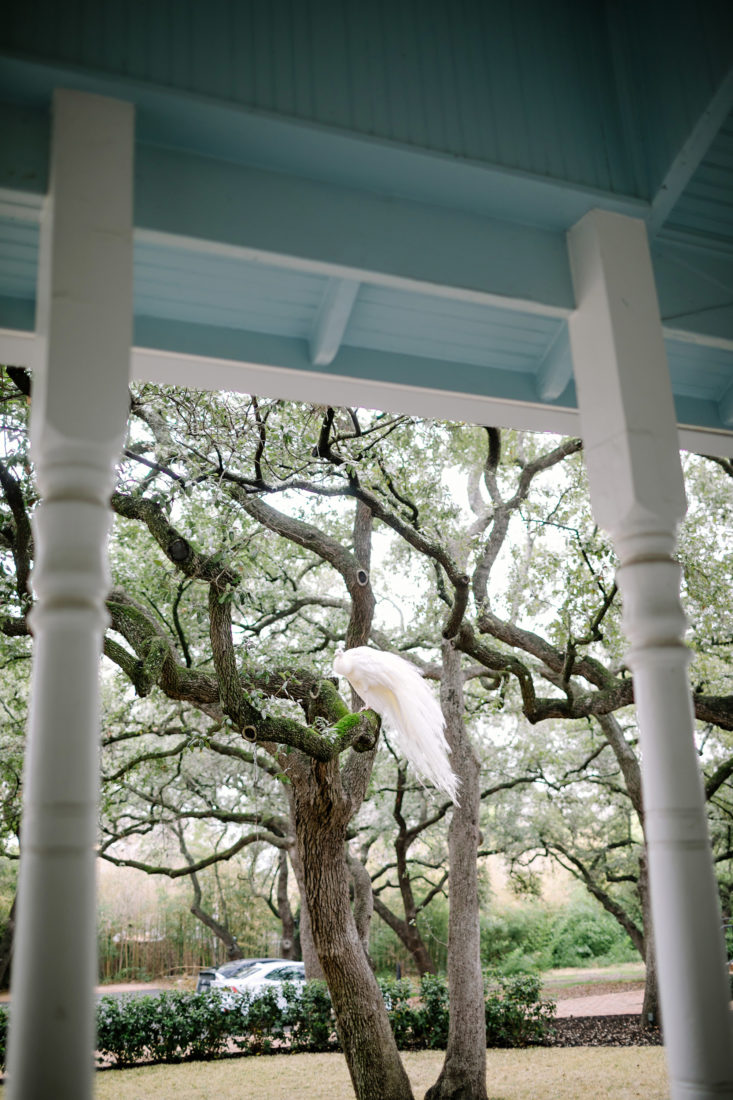
Photo: Julie Wilhite
Snowball perches in a tree outside of Mattie’s.
If peafowl had a Kinsey-esque sex research institute, it just might be the lab that Dr. Jessica Yorzinski runs at Texas A&M University. There, she studies the mating behaviors of a flock of about 40 birds. The animals roam together, tiny cameras strapped to their heads during mating so researchers can study where they gaze, what interests them, and how they pursue mates. “It’s typical, even in the wild, that a few males are mating more often,” Yorzinski says. “And a lot of the other males wouldn’t get much action at all from the females.”
Female peahens hold all the decision-making power in breeding, Yorzinski says. The males set up “display grounds,” strut, and fan out their feathers, and females cherry-pick their partners. “Some of the physical traits a female seems to be looking for are really long feathers that are more symmetrical, and males who display a lot with their train erect,” she says. “And the eyespot feathers seem to be important.” As far as coloring? “If a peahen had a choice between a male with normal versus white coloring, she will likely prefer the more standard coloring.” That means Snowball has probably been left out in the cold season after season.

Photo: Julie Wilhite
Snowball in a birdbath near Mattie’s.
Maybe it was the milk punch warming its way toward my heart—because I know we aren’t supposed to apply human thoughts to animals—but Snowball’s solitude had an existential sadness to me. Here he was, fanning his feathers … just fanning his feathers alone. Screaming into the void. When I posted a video of him preening on Instagram, I wasn’t the only one who found him sorrowful. “Time for some Ritz dye or body paint,” one friend commented. “If I was a lady peacock, he would be my first choice,” another declared.
Dr. Yorzinksi offered a spot of hope. “I wouldn’t say he has no chance,” she says. “There might be some females who are drawn to him, who prefer his coloration.” It is, she reminded me, up to the females to pick mates. “And not all the peacocks are doing their mating right in front of restaurant goers.”
Perhaps Snowball prefers to woo a mate away from the gaze of day-drinking brunchers. Who knows how the drama unfolds at this historic restaurant, long after the last drink is served? Late at night, the oak-shadowed grounds are just for the birds.


